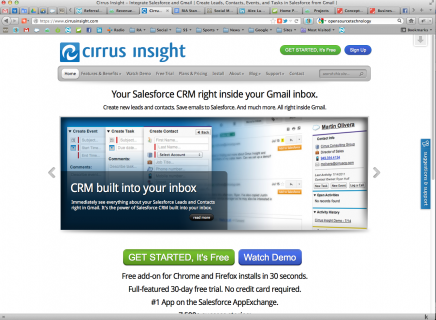CRM systems are notorious in their complexity and lack of success in many cases. Organizational and cultural dynamics play a big role. CRM systems offer a great deal of promise yet so often don’t deliver. With today’s economic pressures it is as critical as ever that firms increase sales without increasing the cost and complexity of selling.
One area getting more attention now is relationship management technology. Clearly LinkedIn has made a huge impact here and now new tools are emerging to help relationship-intensive businesses take better advantage of their enterprise contact and relationship assets.

New tools like Datahug, Gist and others are helping businesses manage information about the organization’s extended relationships (employee’s and firm’s) with individuals and customer/client organizations. They do this by mining the email database and social networks for connections and relationships. This can dramatically impact deal intelligence, qualification and positioning and drive up win rates.
Yet for many years, CRM deployments have consistently under delivered on the promise. The adoption of any CRM-related technology must be approached with a view of the people, process and technology impacts. Relationship intelligence is part of what we call “Revenue Systems” and selecting the right tools and embedding them effectively in the organization requires careful thought and planning.
Some things to consider:
- Potential benefits are strong: These new technology approaches combined with people and organizational changes can deliver dramatic business results by helping firms leverage their extended, multi-level network of relationships that exist at the firm and individual level. By effectively mining a corporation’s extended relationship network, sales and cross-sales ratios can be dramatically improved
- Contacts are highly personal and protected assets: Contact management is a complex human and systems dynamic that requires careful and sensitive analysis to ensure effective adoption
- CRM is notoriously difficult to implement successfully: Many organizations fail to achieve effective sales force adoption of CRM and SFA (salesforce automation) due to cultural resistance and protection of valuable and hard-won contact information. Put the success of the sales team first, and good things will follow.
- Solutions must consider the cultural and process issues involved: An effective enterprise contact network must compliment existing systems and cultural norms while providing the protection and security of personal contact information
Done well, these new relationship intelligence technologies can be a powerful ally in firm-wide deployments – helping to increase win rates, inform bid decisions and enhance the tailoring of winning value propositions.


